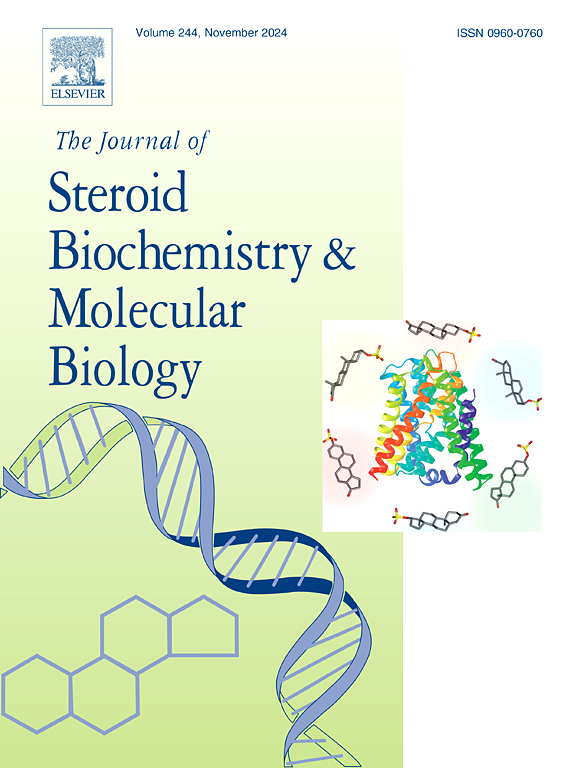Determination of steroid reference intervals in a pregnancy population
IF 2.7
2区 生物学
Q3 BIOCHEMISTRY & MOLECULAR BIOLOGY
Journal of Steroid Biochemistry and Molecular Biology
Pub Date : 2025-02-06
DOI:10.1016/j.jsbmb.2025.106691
引用次数: 0
Abstract
Steroids, including mineralocorticoids, glucocorticoids, and sex hormones play a critical role in pregnancy. Liquid chromatography tandem mass spectrometry (LC-MS/MS) analysis offers an opportunity to conduct simultaneous multiplex steroid analysis within a given sample. This paper describes the LC-MS/MS steroid analysis method developed for assessing plasma specific reference ranges of 18 steroids from plasma samples (200 µL) of pregnant women participating in the PREDO study. Samples were prepared using supported liquid extraction and analyzed on an Acquity I-Class UPLC and a QTrap6500 + mass spectrometer. Mass spectrometry parameters were optimized for each steroid and chromatographic separation of 18 steroids was developed. Changes in steroid levels across pregnancy were assessed. Samples were collected after an overnight fast between 07:00 and 09:00. Data from 257 samples from 96 women with uncomplicated pregnancy (women with pre-pregnancy normal weight and no diabetes or hypertensive disorders before or during pregnancy, who delivered a live child at ≥ 37 weeks of gestation with appropriate for gestational age birth weight) were analyzed to calculate steroid reference ranges over three time points, between 11.6 and 14.3, 17.7–22.9, and 25.6–29.0 pregnancy weeks. Levels of progestogens, glucocorticoids, mineralocorticoids, estrogens, their precursors, and metabolites increased significantly across pregnancy. Androgen levels remained stable, except for a decrease in 5α-dihydrotestosterone. The LC-MS/MS method also showed validity in analyses of 917 samples of 328 women with complicated pregnancies. The method is suitable for the analysis of 18 steroids in plasma during pregnancy and the investigation of pregnancy complications, fetal growth, and development after birth.
求助全文
约1分钟内获得全文
求助全文
来源期刊
CiteScore
8.60
自引率
2.40%
发文量
113
审稿时长
46 days
期刊介绍:
The Journal of Steroid Biochemistry and Molecular Biology is devoted to new experimental and theoretical developments in areas related to steroids including vitamin D, lipids and their metabolomics. The Journal publishes a variety of contributions, including original articles, general and focused reviews, and rapid communications (brief articles of particular interest and clear novelty). Selected cutting-edge topics will be addressed in Special Issues managed by Guest Editors. Special Issues will contain both commissioned reviews and original research papers to provide comprehensive coverage of specific topics, and all submissions will undergo rigorous peer-review prior to publication.

 求助内容:
求助内容: 应助结果提醒方式:
应助结果提醒方式:


